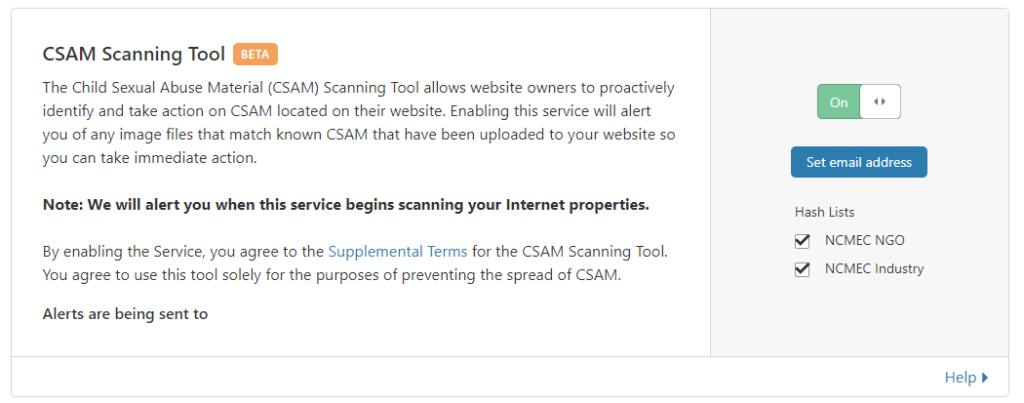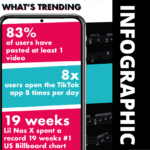New Year, New Trends
Update – see Digital Piracy Trends 2021 edition here
As a new year begins, it is time to guestimate new risks ascending rightsholders’ priority lists. We highlight six trends traversing online service intermediaries, platforms, security concerns, cyber-investigations and digital culture. Avoiding shoehorning analysis into an arbitrarily predefined number of trends (and the allure of a click-bait ’20 Trends for 2020′[1]); a less rhythmic number of developments represents emerging behavioural patterns impacting brand assets of rightsholders, brand owners and creators of all sizes. It must be remembered, the term brand assets embraces IPRs alongside reputation, domain names, values, social media handles, personality, ecommerce stores, goodwill and know-how.

But before the twenty-teens fade, a few notes on 2019 which illuminate 2020 omissions. Social-commerce continued to balloon – Instagram got Checkouts; VK partnered with Alibaba; and Douyin continued to integrate ecommerce features. Live streaming was pivotal in driving sales during Double 11 day, with both Taobao and JD.com adamant in rewarding participating merchants. Transmedia supremacy is upon us. However, the market is now at incrementalism. A distinction between ecommerce, social networks and media platforms is vanishing, with a new world (wide web) order of encompassing ecosystems. Only an Amazon about-turn towards establishing social-commerce would fundamentally shock the market. The Bezos empire seems set to hold onto steadfast beliefs in the selection-price-convenience model.
So called ‘Streaming-Wars’ are coming. Speculation about diversity of platforms leading to a rise in piracy is likely to be misguided. Consumers are generally accepting of paying for multiple services, which is how broadcasters profitably splice and segment content. Consumers are not blood-thirsty pirates ready to rip off legitimate rightsholders at the first opportunity. They are consumers, they want to consume, when this is not possible, they find alternative measures. If Netflix and Disney+ can both provide the quality and quantity demanded from a streaming service, consumers will pay. But, time is money. And the world outside of North America has already seen Baby Yoda-mania. The BitTorrent traffic data alone proves the sheer weight of memes plus spoilerphobia has already persuaded Star Wars fans across the galaxy to access The Mandalorian by any means necessary.

Techno-stargazing proclaiming the revolutionary power of Blockchain and AI dominates discussions about the future of brand protection. Nothing new here to see, but it will continue regardless. Every conference will have an obligatory presentation announcing Blockchain is just about to eliminate counterfeiting. Smart contracts will remain a theoretical miracle cure to copyright infringement. Unfortunately, sentiment analysis technologies are likely to remain overlooked whilst marketing teams extol their virtues in understanding consumer touchpoints. Moving away from the binary framing of consumers who obtain infringing products and services being either ‘pirates’ or ‘victims’ would be a positive starting point.
01 – Cloudflare as a Registrar
Disclaimer: this website uses Cloudflare services for security and performance
An early ‘campaigned-against’ Silicon Valley technology company – Cloudflare were oft-complained about before it was trendy for journalists to criticise the tech industry. Cloudflare offer a suite of security features, including DDoS protection, DNSSEC, SSL encryption amongst a range of other services. Many of the features are provided free, including the newly launched CSAM (Child Sexual Abuse Material) Scanning Tool – which alerts website owners using Cloudflare services for any images matching a database as provided the National Centre for Missing and Exploited Children.

How is a company dedicated to mitigating security risks a brand protection risk? Cloudflare’s network is frequently utilised by criminals and extremists. The launch of CSAM Scanning Tool was predicated on widespread media reporting of Cloudflare protecting websites hosting child abuse content. 2019 was an eventful year for the company, completing an IPO in September a month after being embroiled in the 8chan scandal. Numerous rightsholders have accused Cloudflare of not respecting intellectual property laws, with the company being included on the European Commission’s ‘Counterfeit and Piracy Watch List’ in 2018 (there seems not to be a 2019 list and as a US company they are not eligible for the Notorious Markets List).
Now frustrated rightsholders will be seeing double, Cloudflare listed as registrar and under IP owner. Registering a new domain, or transferring an existing domain is done at cost, meaning they are substantially undercutting other registrars. Naturally, a listed company doesn’t give services away altruistically, upselling security and performance-optimisation features is the end-goal. With registrar services being launched in September 2019, already we’ve observed lookups returning double-Cloudflare.
02 – Game over for Insta-Bots
Instagram’s parent company Facebook continuously reiterates blocking Bot activity is the primary solution to reduce platform abuse. Unerringly faithful to this mantra, Facebook actioned 5.4 billion “fake accounts” in the first three quarters of 2019 Across the Big Blue app and Instagram. Up 66% from the entire 2018 period and more than double the year-on-year figure, with an average proactive removal rate ~99.5%. Many cyber-investigators and members of the OSINT community are reeling from this crackdown, along with stricter account verification standards. ‘Facebook aficionados’ and automated solutions are scrambling to conduct effective platform reconnaissance. Those who craft active covert accounts implementing prudent maintenance measures are gleefully carrying on.
Top tip for 2020: treat covert accounts as an asset, invest resources into preserving them before the inevitable investigatory necessity arises.
Positively, Facebook is dramatically reducing the scale of Bot abuse. This is filtering through, effecting Instagram accounts promoting counterfeit product. Such accounts are low-hanging fruit. Instagram’s culture will remain money-making-centric, a hareem of advertising with direct, organic and influencer marketing all vibrant, viable channels. Naturally, organic strategies diminish over time as the platform steers towards options which they can extract greater revenue from. Over the next year, rightsholders must be alert to new forms of abuse across Facebook, Instagram and any other social media platform implementing similar content governance measures. Infringers will not instantaneously give up on a platform, Instagram is far too important for a mass scale exodus. Therefore, agile infringers will shift tactics, adapting to the new environment to exploit new methods of selling infringing wares. Taking a punt on how – we believe using video features including Stories and IGTV to advertise product. Using heavily pushed features i.e. Stores drastically reduces the risk of proactive account blocking. Expect the recycling of short video clips displaying merchandise, rather than the old tactic of spamming posts across Bot accounts.
An additional bonus for infringers will be the reduction in detection rate for accounts which favour video over post content. Scanning solutions target text indicators, maybe even images if the price is high enough. Ephemeral video content flies well below the radar. A win-win for infringers.
03 – Amazon Spill-Over
Merchant competition on Amazon is stiff, shenanigans are rife. New initiatives are assisting brand owners in reducing the scale of infringement across Amazon. Features in Brand Registry are transforming Amazon’s portal into the industry gold-standard for IPR protection. Stronger terms of services and reporting mechanisms leads to infringer displacement. Shopify has been eating away at Amazon and other marketplaces, offering better margins for merchants and dropshippers. eBay saw somewhat of a mini-revival over the Christmas period in terms of brand piracy as merchants seek pastures new. Numerous dropshipping platforms are offering guidance and automation to ‘avoid VeRo takedowns’, softening the departure from the west’s dominate marketplace.
Quick note: the guidance is misguided, with the methods doing little to harden listings, rightsholders have little to fear in this respect.
As such, less-regulated platforms are likely to benefit once infringers wise up to the false claims. Shopify and Wish are likely to be the biggest beneficiaries over the course of next year. However, the two pillars of marketplace monitoring – Amazon and Alibaba – will maintain their global duopoly.
04 – Listen Out for Audiobooks
Year after year triple digit growth in the audiobook market is causing a proliferation of book piracy. High growth is attracting infringers to the sector and increasing awareness is enticing consumers. Search trends are showing a pronounced decline in queries for ‘[book title] PDF’/’free ebook’ with a sharp surge in queries for ‘[book title] free audiobook’. Obviously not all searches indicate piracy, but, seek and you shall find. Structurally infringing pirate sites are increasingly adding an audiobook category or featuring popular items within prominent UI real estate. Availability via illicit channels will soar in 2020.
Demand has been partially fuelled by cannibalising the stagnant eBook market, which has been systematically dismantled by the publishing industry. This has had a knock-on effect for consumers seeking a digital option in both legitimate and infringing distribution channels. Audible’s (Amazon owned) free trial and digital advertising campaign blanketing the blogosphere with referral codes has captured a large proportion of such consumers. However, distribution of audiobooks and DRM-circumvention software is widespread on Twitter, Reddit, YouTube, Tumblr, and other platforms with strong book communities.
Whereas eBooks were set upon by publishers from the start, audiobooks are stimulating positive vibes – being the fastest growing segment of publishing and generating a large windful for the industry has that effect. More than just revenue, the format is complimentary, rather than a substitution, well-aligned with the interests of traditional publishing. Not all is celebratory, the digital distribution platforms must not let audiobook piracy become rampant. The onus is on them to ensure illicit distribution doesn’t change perceptions regarding the new format; otherwise, we could see ‘Publishers vs Amazon II’.
05 – Mobile-OptimisedOnly
To no one surprise, the trend towards mobile devices continues. In 2020, rightsholders will need to stop conflating ‘mobile’ with ‘apps’. Infringing websites are increasingly operating without being accessible via desktop browsers, only available on mobile browsers. The most concerning threat will be from outbound phishing attacks exploiting brand assets. However, pigeonholing mobile risks into any single area belies the diversity of piracy occurring. Mobile ecosystem monitoring must increase, significantly.
Phishing attacks are replicating the design of popular platforms to elicit sensitive information from unsuspecting users. This MO is not new, but infringers are restricting access to mobile devices to avoid detection from desktop-oriented scanning solutions. Links to phishing sites are disseminating through messaging services, mobile apps and social media platforms. The continuing failure to explore this frontier is enabling substantial harm to brand assets, and consumers. Investigators must follow piracy across the entire digital supply chain to be effective.
06 – Connecting Digital Risks
Security services including digital footprinting, surface risk profiling and reputation management are growing in awareness for all organisations. High profile security breaches often shock companies into action. In 2020, rightsholders will start to better connect the dots between such services and brand protection. Brand value is intrinsically dependant on reputation. Appreciating the brand assets concept requires understanding the interplay between security risks and IPR infringement.
Over the past few years, trendy security services rose to the forefront, including dark net monitoring for infringing goods and services. Such monitoring has rarely been cost-effective, generally being an inappropriate resource sink. Dark net services will remain vital for specific rightsholders and intel gathering in limited circumstances, which often helps predict future trends filtering through to the open web. Over the next year we will see brand protection strategies assimilating more widely applicable services, such as digital risk profiling and social media auditing to deliver greater value.
Other click-bait titles considered:
EXPOSED: Piracy update alert as millions warned they may need to avoid the internet
Shocking truths about piracy in 2020 other providers are not telling you
You won’t believe these piracy trends in 2020
Man makes millions exploiting these piracy trends, learn how you can in 2020
Unbelievable results following these 6 steps
Criminal infringed IPRs. You won’t believe what he did next!



